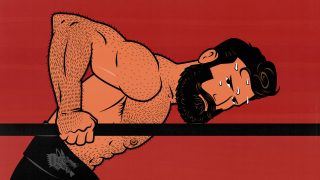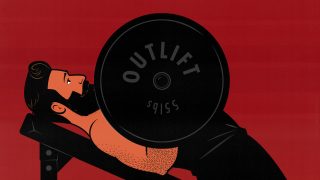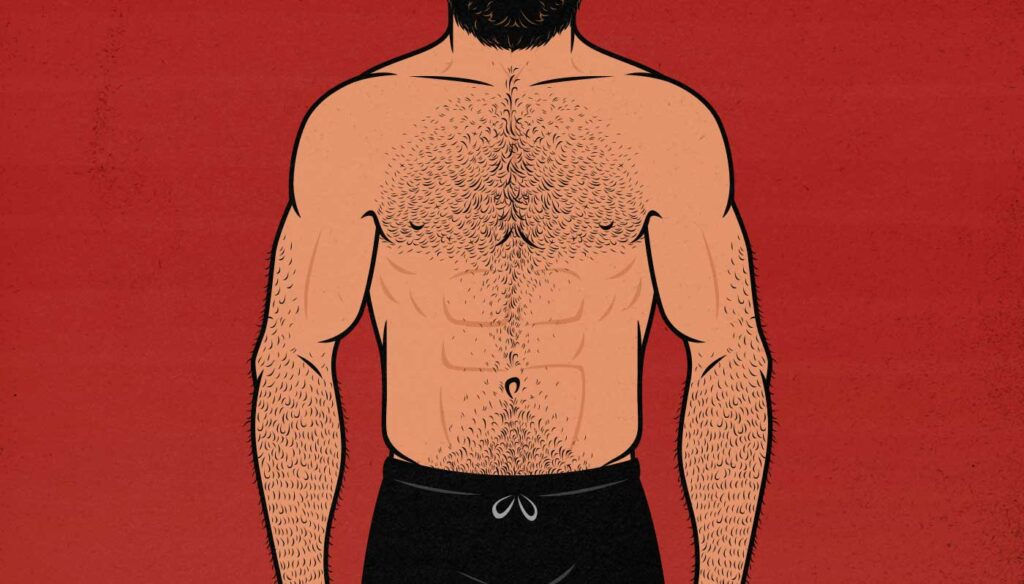
How to Grow Stubborn Muscles
How do you know if a muscle is stubborn? Much of the time, when someone thinks they have a stubborn muscle, it isn’t actually stubborn, they just aren’t training it properly. Sometimes growing stubborn muscles is as simple as following a better workout routine or choosing better lifts.
But our muscle-building genetics can vary from muscle to muscle, and most people have some muscles that are truly stubborn. So just because you’re building muscle overall, that doesn’t necessarily mean that all of your muscles will grow at the same speed. It doesn’t even mean that all of your muscles will grow at all. You may leave some in the dust. Why is that?
And how can we grow those lagging muscles? Fortunately, there are five fairly simple methods that tend to work quite well at bringing up lagging muscle groups.
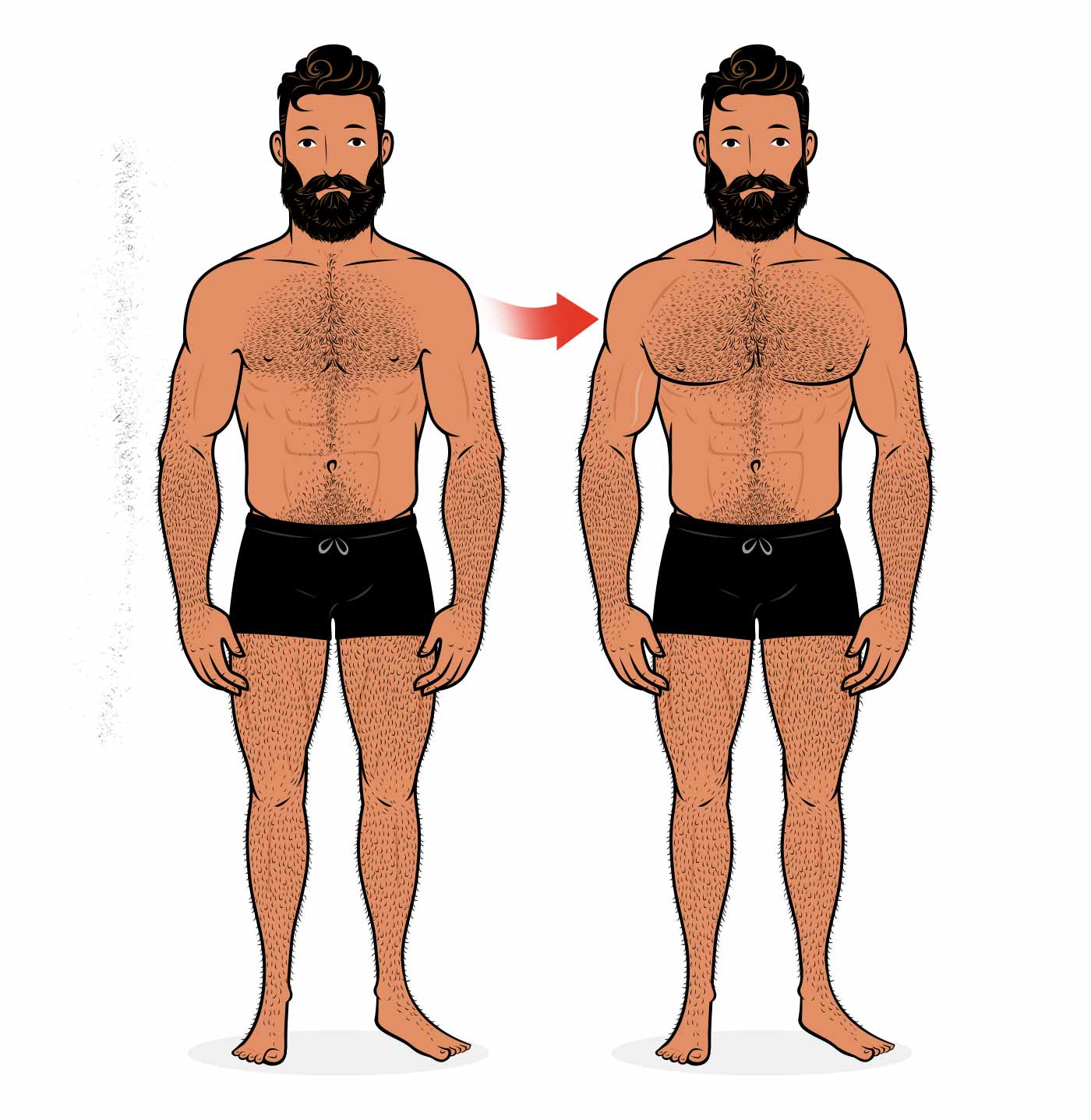
How Do You Know if a Muscle is Stubborn?
You may have a muscle that you’re eager to grow, but just because you want it to be bigger, that doesn’t necessarily mean it’s stubborn. After all, it might be growing just fine. It’s just a matter of continuing to be march onwards.

You’ll also hear some people complain that, say, their chest and upper back are lagging behind their legs. Then you find out that they’ve been doing Starting Strength or StrongLifts, which means they’ve been squatting twice as often as they bench, and with no dedicated lifts for their upper backs, such as the chin-up. No surprise, then, that their upper bodies are falling behind. That’s not because their upper bodies are stubborn, though, it’s just because they aren’t training their upper bodies as hard as their lower bodies.
For a muscle to be stubborn, it has to meet a few criteria:
- Is it hard to activate with your training? Does it never get a pump, never feel like it’s working, or never get sore?
- Does it lag behind related muscles? For example, if your front delts and triceps grow from the bench press, leaving your chest behind, that’s a sign that your chest is stubborn. But if all three of those muscles are small, maybe you just aren’t pressing often enough, hard enough, or eating a diet that supports muscle growth.
- Is it hard to gain strength on the related movements? For example, despite benching with the same rigour as you squat, deadlift, and chin-up, is it much harder to get stronger at the bench press? If so, that might be why your chest is lagging behind.
- Is the muscle still far away from its genetic potential? For example, if your arms become stubborn after you bulk them up to 16 inches, are they really stubborn? Maybe not. Maybe you’ve just already bulked them up their genetic potential. On the other hand, if you’re starting to run into growth plateaus with your biceps and triceps when your arms are just fourteen inches then, yeah, they might be stubborn.
- Are you gaining muscle overall? Sometimes when a muscle isn’t growing, it’s not because it’s stubborn, it’s just because you aren’t gaining any muscle overall. For example, if you aren’t eating enough protein to build muscle out of, or if you aren’t eating enough calories to gain weight, then it’s no wonder that your muscles aren’t growing. This especially applies to people who are doing body recomposition. If your recomp isn’t allowing you to gain muscle size or strength, maybe you should switch to a more powerful muscle-building method, such as bulking. Even a very slow bulk will often do the trick.
Why Are Some Muscles Stubborn?
Sometimes muscles are stubborn because we aren’t training them properly. In that case, simply improving our training methods will catch them right up, and they won’t ever be stubborn again. But that’s not always the case. Our muscle-building genetics aren’t evenly distributed throughout our bodies. Some people are able to gain muscle just fine overall, except that it’s their chests that explode in size while their arms lag behind, or their legs that grow enormous while their upper back lag behind. Almost everyone will have some muscles that grow more readily than others. That’s normal.
Sometimes the reason is obvious to see. Guys with very small wrists, such as myself, often have a harder time bulking up their arms. Muscle growth is intimately related to bone size and density, and so when your bones are smaller, it can limit your muscle-building potential. Back in my early days of lifting, I was benching 225 pounds for sets of 5 repetitions with 11-inch arms. Eventually I was able to bulk them up to 15.5 inches, but it took a disproportionate amount of direct arm work to do it.
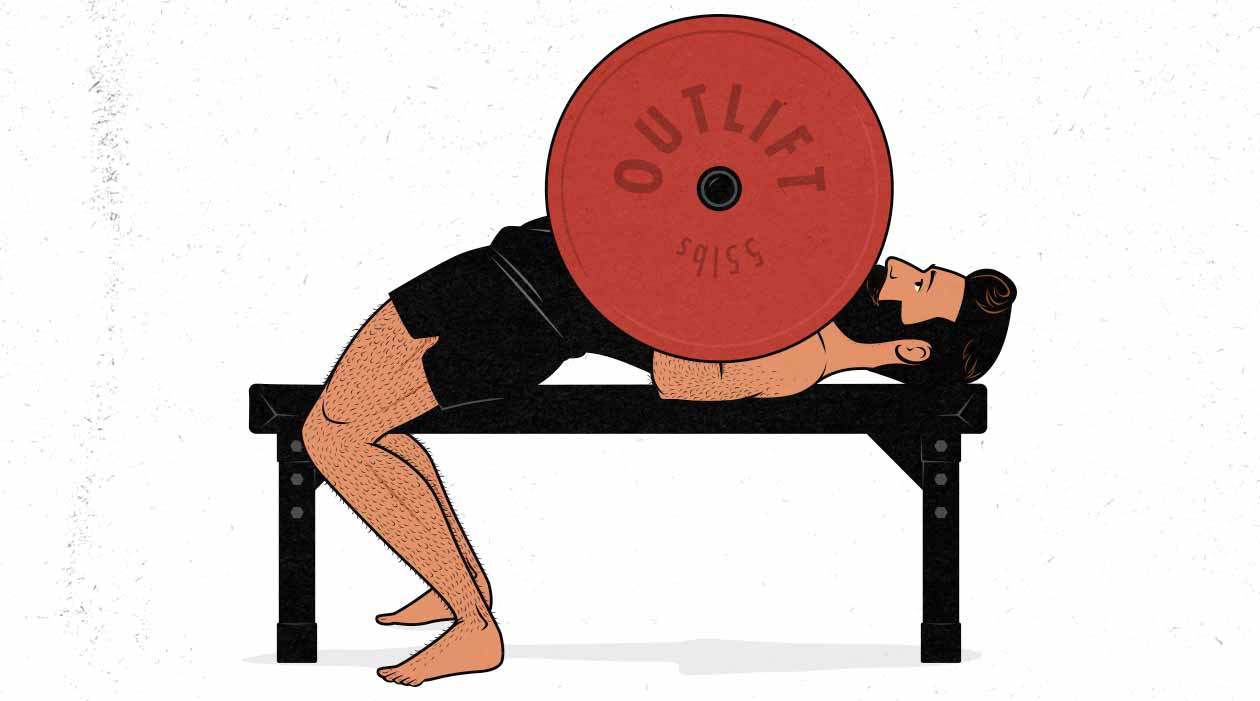
Similarly, guys with narrow shoulders—short collarbones—often have a harder time building big chests. There’s simply less real estate there. You may also find that your shoulders and triceps might dominate your bench press. Now, that doesn’t mean that it’s impossible to build a bigger chest, just harder.
There are other reasons, too. It’s common to have some muscles that have more fast-twitch muscle fibres, making them easier to stimulate, easier to make sore, easier to bulk up. Conversely, some of your muscles surely have more slow-twitch muscle fibres, meaning they benefit from higher training volumes, are harder to fatigue, harder to make sore, and won’t grow as quickly.
There are a couple of implications here. First, what works for those with naturally big arms or a naturally big chest probably won’t work for you. If you follow in their footsteps, those body parts may still refuse to grow. Second, your stubborn body parts may always need special attention to continue growing. It’s not like once I figured out how to activate my biceps, they grew just like all of my other muscles. No, it turns out that if I want to bulk up my biceps, I need to do a whole lot of special work for them. And as they climb closer to their genetic potential, that only becomes more true. On the bright side, it’s very easy to maintain muscle size, so now that I’m happy with my biceps size, I can spend years without doing curls and my biceps won’t shrink. It’s just that they won’t grow, either.
How to Grow a Stubborn Muscle
Method 1: Eat Enough
We’ve mentioned this already, but it bears repeating. Muscle needs to be built out of protein, and beyond the beginner stage, most people also need to gain weight to see a significant amount of muscle growth. So before delving deeper into the depths of Moria, make sure that:
- You’re eating enough protein to build muscle. About 0.8–1 gram of protein per pound bodyweight per day is perfect.
- You’re eating enough calories to gain at least a little bit of weight each week. Weigh yourself every week. If you’re gaining 1–4 pounds per month on average, great. If not, try eating more calories until you do. If it’s hard to eat that much food, that’s common for so-called “hardgainers,” and I hear you—it’s hard for me, too. We’ve written an entire article on how to eat more calories.
- Get enough sleep. It’s always easier to build muscle if you’re getting enough sleep, and that may be especially true with the muscles that only grow when all the stars are aligned.
As we mentioned above, if you’re cutting or recomping, it can be really hard to build muscle. Some people can do it, especially if they’re out of shape, beginners, or getting back into peak condition. But if it’s not working, make sure that you’re gaining weight.
And as Mike Israetel, PhD, points out, some of our muscles grow more eagerly than others. It’s possible that some of your muscles will grow decently well even in a deficit, whereas others will struggle to grow even in a surplus. In that case, it can be nigh impossible to bulk those stubborn muscles up unless you’re bulking overall.
Method 2: Do Hypertrophy Training
If you’re doing strength training, CrossFit, or Olympic lifting, well, no wonder you’re having a hard time gaining muscle size—those aren’t style of weight training that are designed to make your muscles bigger! If you want to train specifically for bigger muscles, use hypertrophy training.
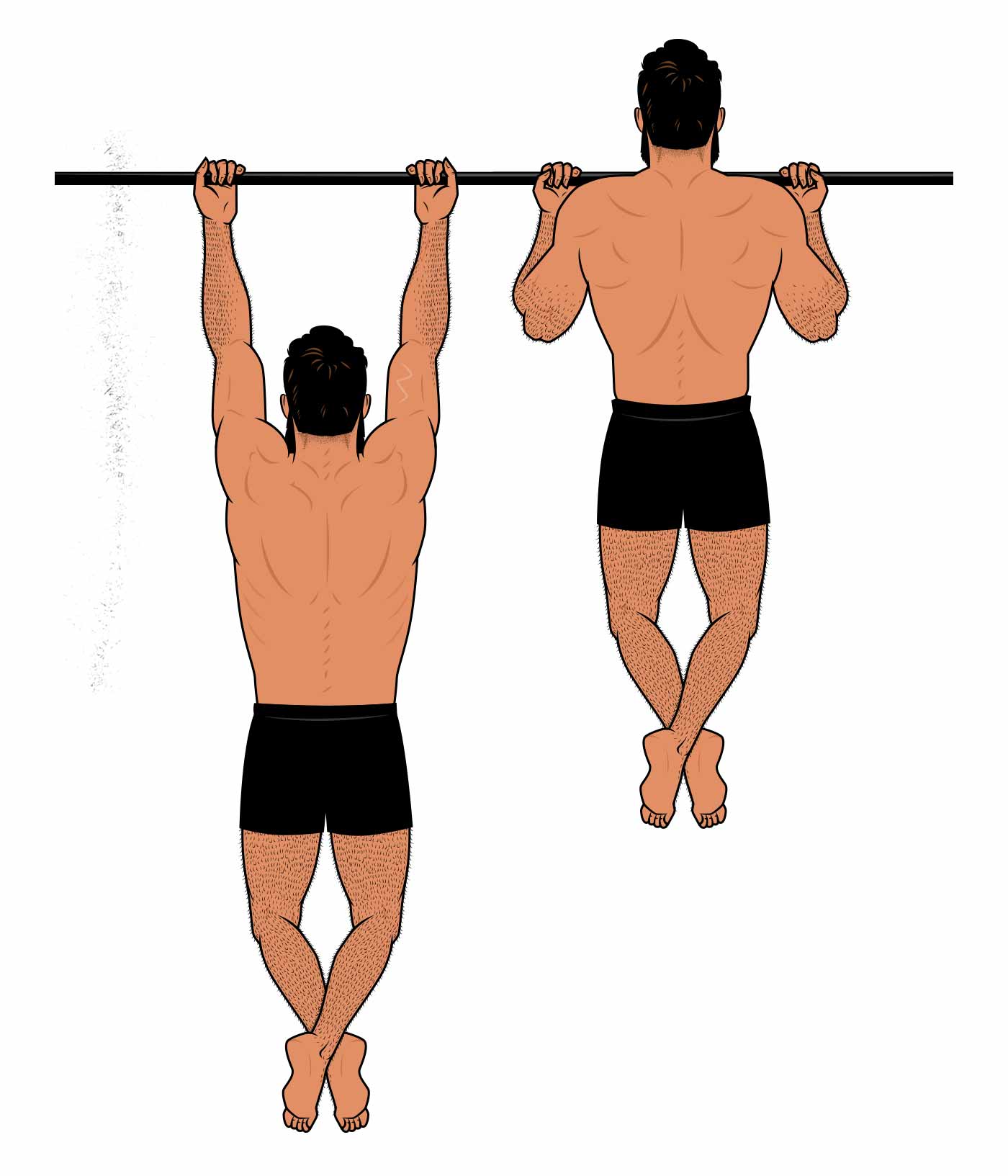
If a muscle is refusing to grow, make sure that you’re actually training for size, lifting in a moderate rep range of 6–20 repetitions per set (depending on the lift and the muscle), doing 4–8 sets for that muscle group every time you train it, training it 2–4 times per week, and bringing your sets within 0–2 reps of failure. That’s the best way to build muscle.
As you can see, a big part of hypertrophy training is making sure that you’re doing enough reps per set, enough sets per workout, enough workouts per week, and bringing those sets close enough to failure. The key takeaway here is to make sure that you’re doing enough to stimulate muscle growth. So, how do you know if you’re doing enough? It’s a good sign if you get a pump in your target muscle, it feels tired by the end of the workout, and it feels sore if you palpate (aka massage) it during the next 24–72 hours. If that’s happening, great. If not, you might need to do more. Or you might need to…
Method 3: Choose Better Lifts
Let’s say you’re doing plenty of benching and overhead pressing, and you notice that your chest and shoulders are growing quite well, but your triceps are lagging behind. Why is that? It’s not because your triceps are stubborn, per se, it’s just because you aren’t doing any lifts that properly target the long head of your triceps.

The triceps are biarticular muscles that cross both the shoulder and elbow joints, so when you’re doing compound lifts that involve movement at both joints, they struggle to fully activate. To fix that, add in a single-joint isolation exercises, such as skull crushers, and you should notice that your triceps start to grow much better (study).
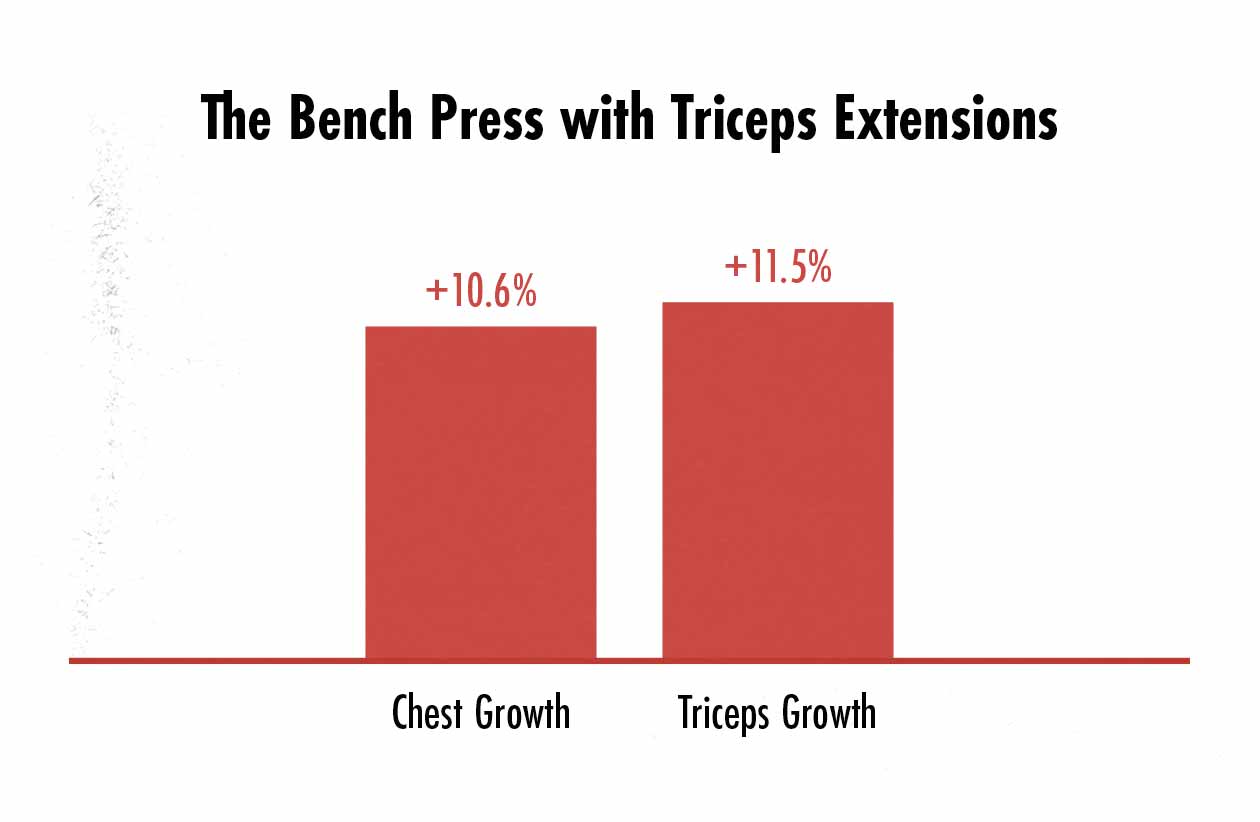
This same problem arises with a number of different biarticular muscles. For example, our biceps struggle to fully activate doing rows and chin-ups, which is why we need biceps curls. And our hamstrings struggle to activate during squats, which is why we need Romanian deadlifts and leg curls.
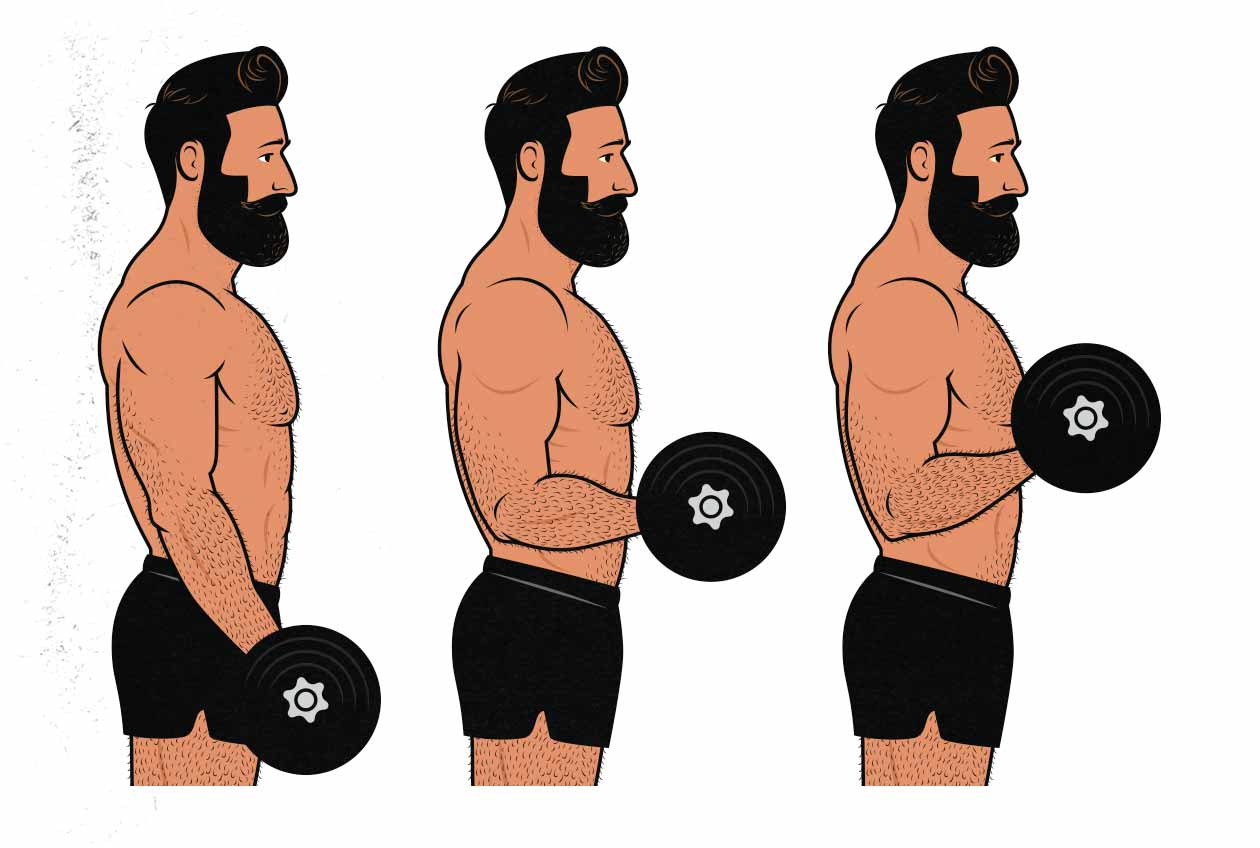
A second component of this is making sure that you’re choosing good lifts. There are a number of factors that can make a lift good for building muscle, but some of the more commonly overlooked ones are:
- Does it allow you to progressively overload the muscle? You need to choose a lift that lets you gradually add weight or reps every workout or two. That’s how we make our muscles gradually bigger—by continuing to push them outside of their growing comfort zones.
- Does it train the muscle in a deep stretch? This one is rarely talked about, but one of the best ways to stimulate muscle growth is to train your muscles at longer muscle lengths, in a more stretched position (meta-analysis). So when you squat, go as deep as you can, getting a nice stretch on your quads. When you bench, bring it all the way down to your chest, getting a nice stretch on your pecs. When you do biceps curls, consider doing incline curls or sissy curls. When you do chin-ups, stretch out your lats at the bottom, and keep tension on them when you do it.
- Is your target muscle the limiting factor? If you’re limited by your shoulder or triceps strength on the bench press, it might not be the best lift for building a stubborn chest. Maybe use a more moderate rep range (10–15 reps) or use a slightly wider grip. That way your chest is more likely to limit you. The same is true for a variety of lifts. You need to find lifts where you’re limited by the strength of your target muscles. Don’t rely on compound lifts for your abs, squats for your hamstrings, overhead pressing for your side delts, rows for your biceps, or the bench press for your triceps. Find lifts that do a better job of challenging those muscles.
For more, we have an entire article on lift selection for hypertrophy training.
Method 4: Improve Your Technique
One of the very best ways to bring up a lagging body part is to make sure that you’re doing the best lifts with proper technique. And not just technique that allows you to lift more weight, as a powerlifter might, but technique that allows you to activate your target muscles, as a bodybuilder would.
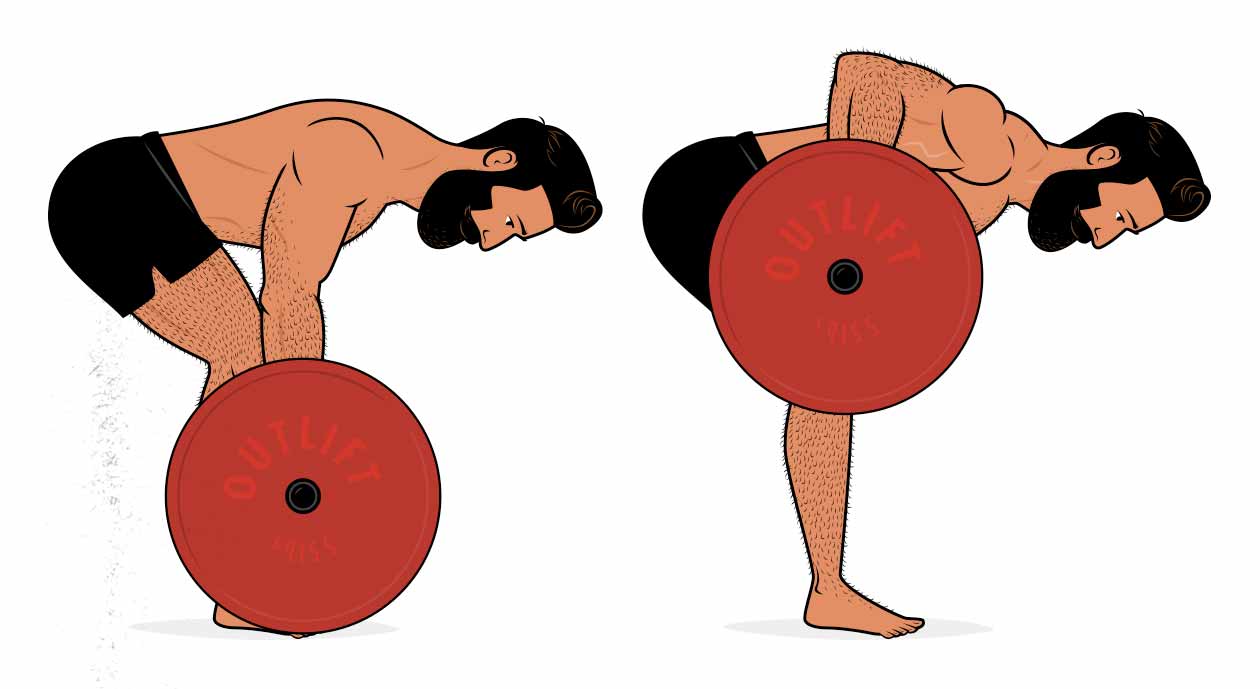
So, for instance, if you’re having a hard time building bigger lats with your barbell rows, which technique are you using? Are you doing your rows like a powerlifter, lifting the barbell explosively from the floor and then dropping it back down? This is the variation favoured in a number of strength training programs, but it’s not an upper-back lift, it’s a hip and lower-back lift.
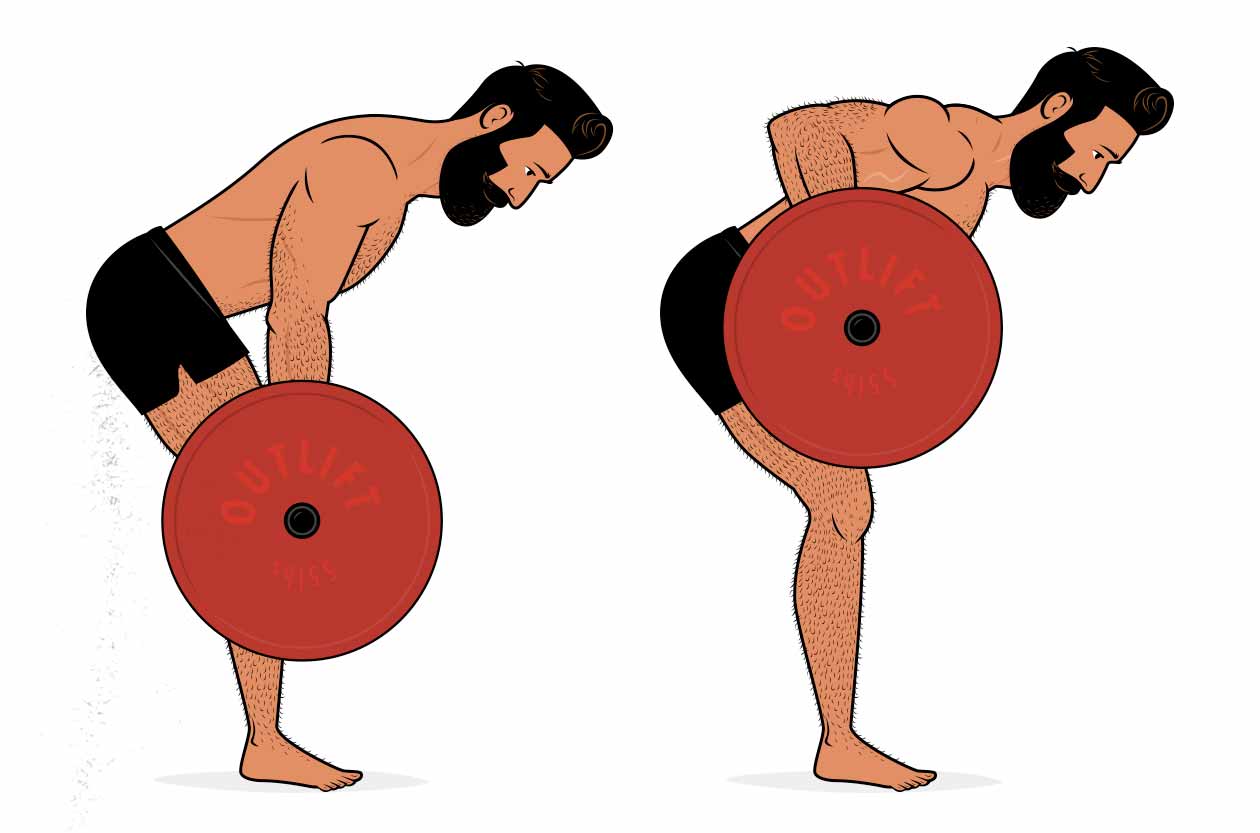
A better way to emphasize upper-back growth is to do your rows from a hip hinge position and lowering the barbell down slowly. That way the lift is easier on your hips and lower back, more challenging on your lats, and you get extra growth stimulus from the lowering portion of the lift.
One way that people improve their bodybuilding technique is by working on their mind-muscle connection, and in some instances, that can help. For example, if you’re having trouble growing your lats with the barbell row, try driving your rep range higher (to 15–18 repetitions per set) and focusing on driving your elbows back with your lats. That practice might help you learn to activate them better.
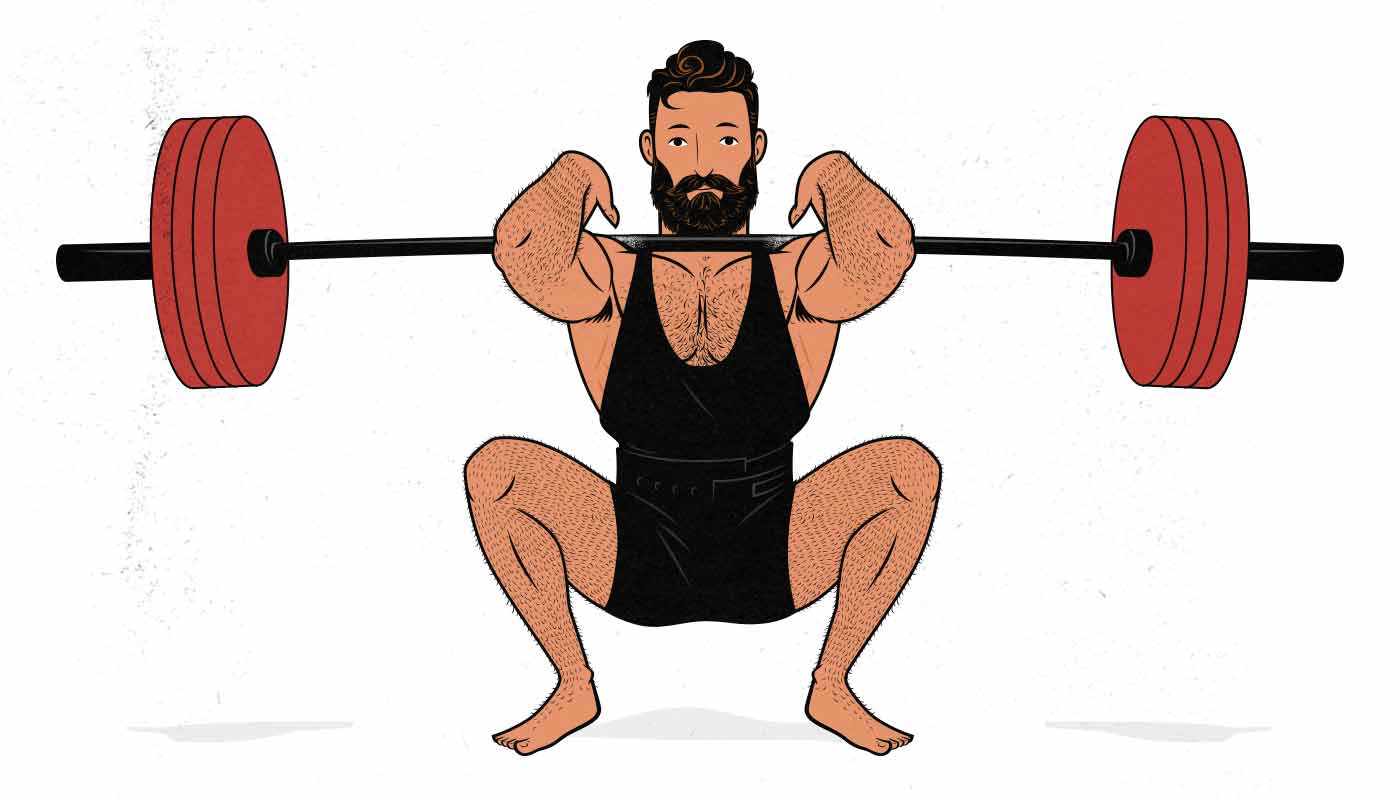
Finally, as mentioned in the previous section, you need to make sure that you aren’t cutting your range of motion short at the bottom of your lifts. Make sure to squat deep enough to stretch your quads and to bench deep enough to get a stretch on your pecs.
Method 5: Eliminate Interference
Are you doing a ton of other non-muscle-building work with your stubborn muscles? For example, are you training for a marathon or going on 5-mile jogs every day? If so, maybe that’s why your legs are having a hard time growing. There might be too much endurance work interfering with your hypertrophy training.
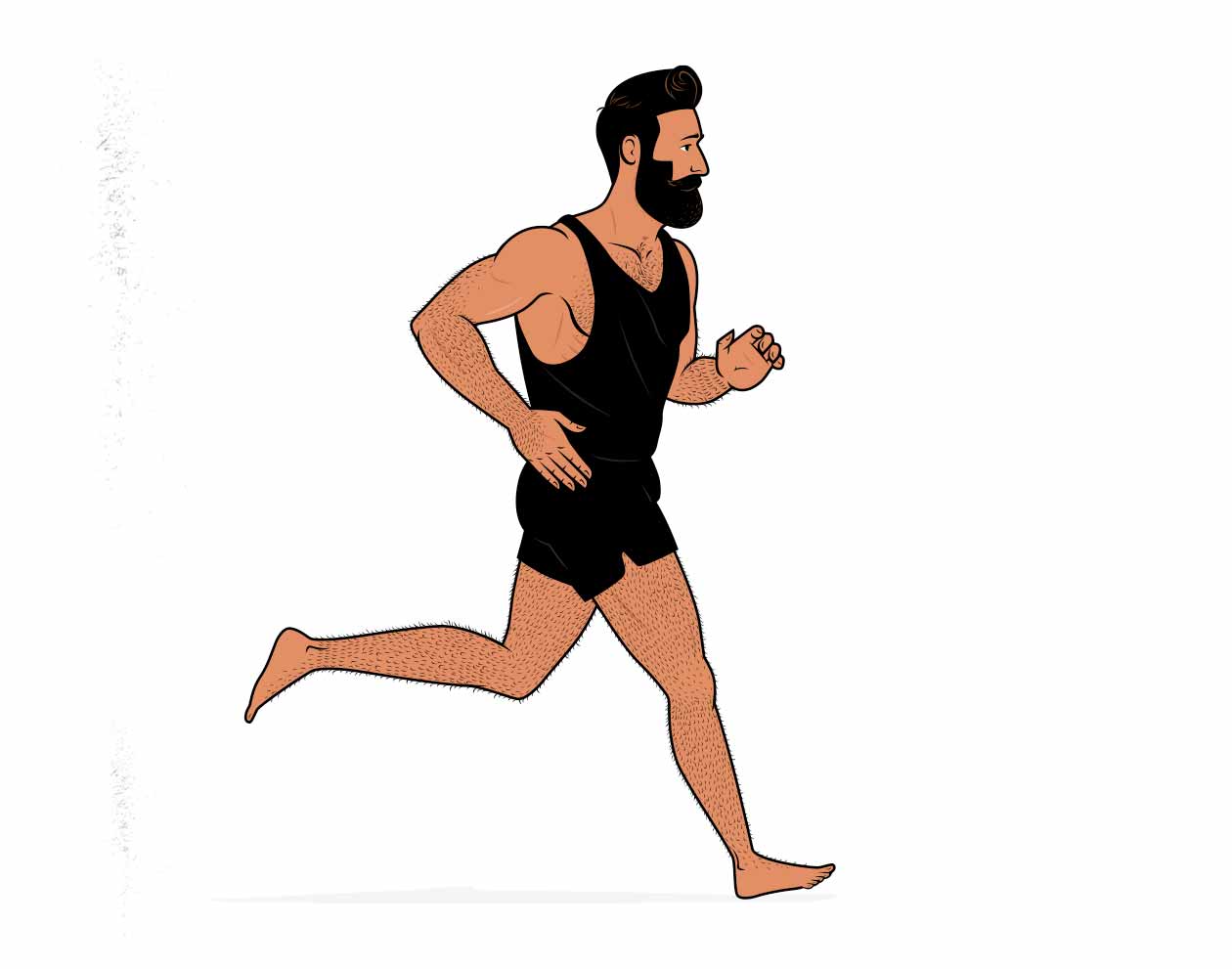
Now, that doesn’t mean that you need to avoid cardio or physical activity outside of the gym, it just means that it’s something to consider when things start going wrong. As a general rule of thumb, exercise is a good thing. Better if you lift and do cardio and are physically active. Don’t be too quick to cut back on being active or you may also be cutting back on what’s keeping you healthy and spry.
Specialization Phases
When you want to focus on just a few muscles, it can often help to minimize overall fatigue. A great way of doing that is to scale back the volume for your other muscle groups.
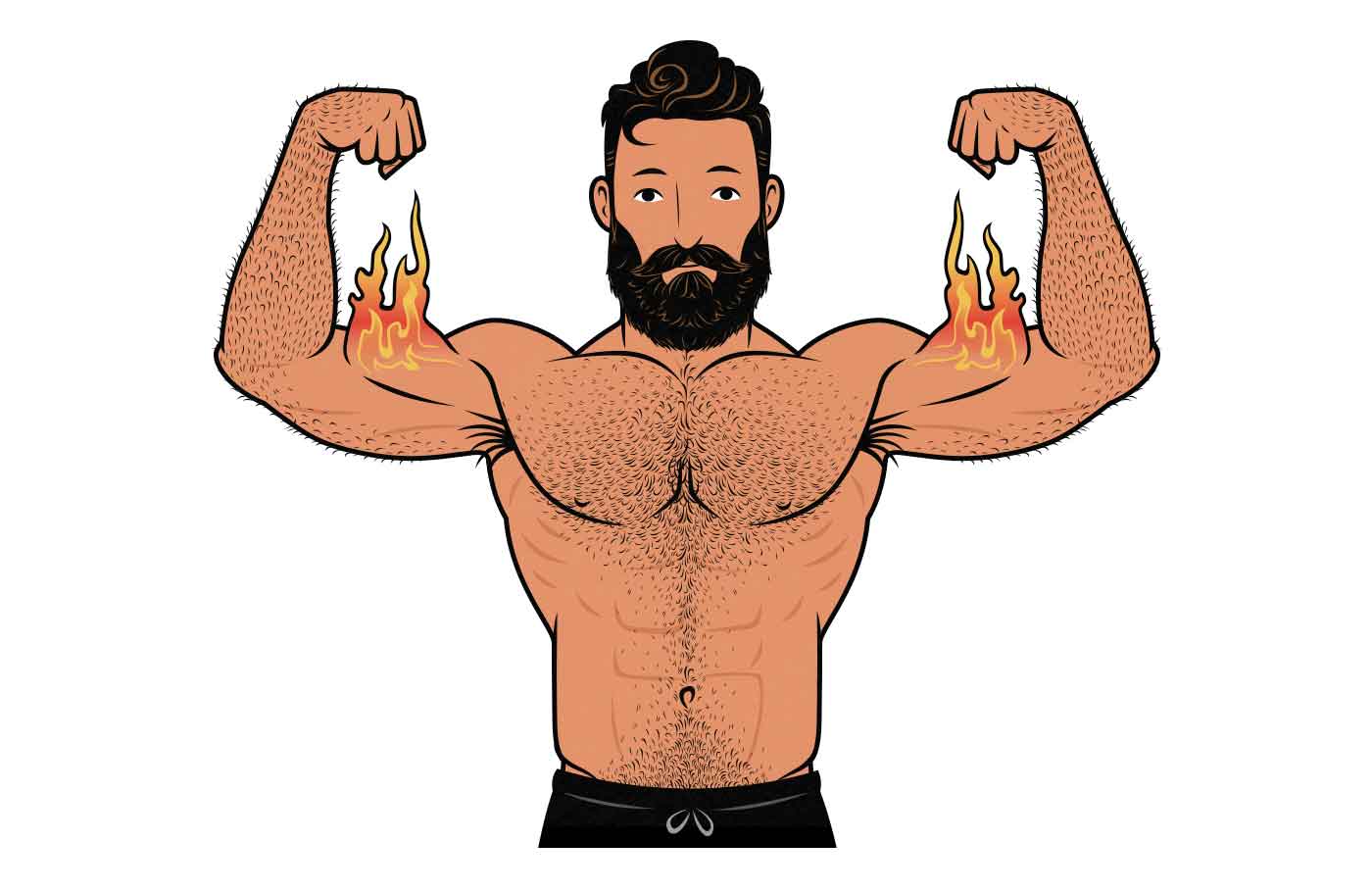
For example, if you’ve got skinny arms that are lagging behind your chest, upper back, and legs, there’s nothing wrong with scaling back the rest of your training so that you can spend a few months focusing on building bigger arms. Here’s how you might do that:
- Replace the bench press with the close-grip bench press to better stimulate your triceps. That should also be enough to maintain your chest and shoulder size and strength.
- Chin-ups are great for working the biceps while also training the upper back and abs, meaning that you won’t need much other back or ab work to maintain their size and strength.
- Replace your conventional deadlifts with Romanian deadlifts so that you can work your posterior chain while generating less overall fatigue.
- Instead of doing plenty of squats, leg presses, and leg extensions, switch to doing just a couple sets of squats each week. That will probably be enough to maintain your squat strength and quad size.
- Add in plenty of biceps curls to directly train your biceps—the most reliable way to build bigger biceps. This can include a mix of different exercises, such as barbell curls, dumbbell curls, and incline curls. Perhaps you train your biceps three times per week, with each workout focusing on a different variation.
- Add in plenty of triceps extensions to directly train your triceps—the most reliable way to bulk up your triceps. This might mean doing skull crushers, overhead extensions, and triceps pushdowns. Again, you might want to train your triceps 2–3 times per week, focusing on different lifts each workout.
- Include some hammer curls and reverse curls for your brachialis and brachioradialis, which will help to add some size to your arms.
- Maybe finish each workout with some wrist curls and extensions to build bigger forearms.
That’s a ton of work for your arms, and if you’re only doing, say, three full-body workouts per week, that might mean that the majority of each workout is spent blasting your arms with isolation lifts.
Is that a great way to build muscle overall? Nope. But is it a good way to bring up lagging arms? Oh hell yes. And your other muscles will be just fine while you do it.
Summary
A stubborn muscle is one that struggles to grow even when your other muscles are growing just fine. To quickly summarise, the five ways to grow a stubborn muscle are:
- Eat enough protein and calories to gain muscle overall. That means eating at least 0.8–1 gram of protein per pound bodyweight per day, and it means eating enough calories to gain around 1–4 pounds of weight on the scale each month.
- Follow a good hypertrophy training program. There are a ton of different styles of weight training, each with their own goals. Strength training is for improving our 1-rep maxes, Olympic lifting is for explosive power, and CrossFit is for general fitness. When trying to gain muscle size, you should train for muscle size—hypertrophy training. A big part of hypertrophy training is making sure that you’re doing enough reps per set, enough sets per workout, enough workouts per week, and lifting close enough to failure. The other part is…
- Choose lifts that properly stimulate the stubborn muscle. That means choosing good lifts for building muscle in general, and it also means choosing lifts where your target muscle is the limiting factor. For instance, if 5-rep sets of barbell bench press are working your shoulders and triceps harder than your chest, you might want to do 10-rep sets of bench press with a slightly wider grip to shift more of the emphasis to your chest, or perhaps switch to using dumbbells. Isolation lifts can be valuable here, too.
- Lift with good technique. Part of lifting with good technique is doing the lift correctly, but another aspect is lifting with technique that’s good for stimulating muscle growth. So, for instance, part of squatting correctly is going deep enough. But different squat variations can be done to different depths, and so maybe you want to do front squats instead of low-bar squats to get an even deeper stretch on your quads. For another example, bringing your chest to the floor during push-ups is correct, but to stimulate even more muscle growth, you might want to do deficit push-ups to get an even deeper stretch on your chest.
Finally, once you’re eating enough to build muscle, doing the best lifts for your stubborn muscles, doing those lifts properly, and doing enough challenging volume—enough reps per set, enough sets per workout, enough workouts per week, and going close enough to failure—then the next thing to focus on is getting stronger at those lifts.
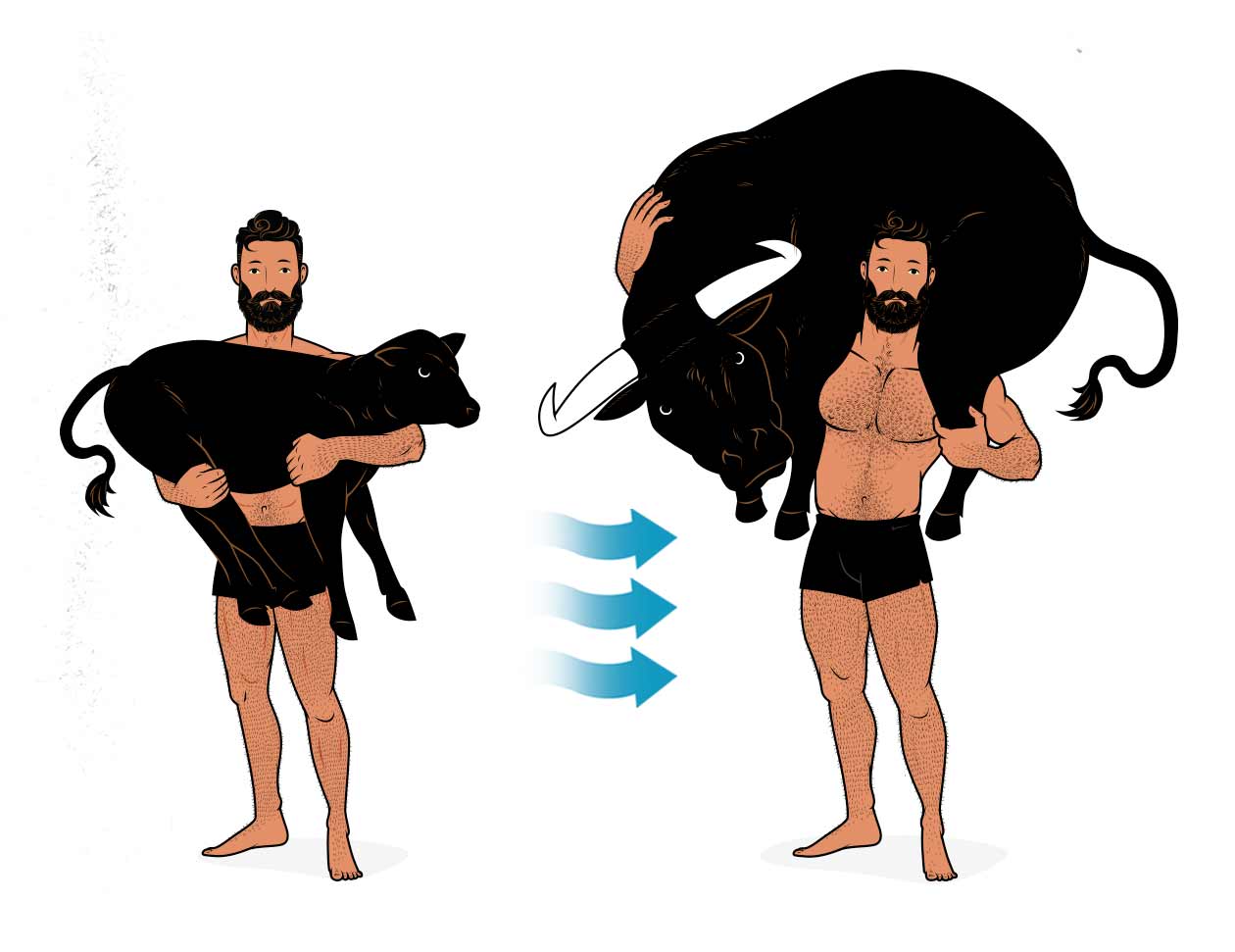
Every workout, try to add a bit of weight to the bar or to eke out an extra rep. Maybe you want to add an extra set, too, especially if that muscle group isn’t getting very sore and is recovering smoothly between sessions. This is the secret to building muscle overall, and it’s especially true with our more stubborn muscles.
Find a lift that challenges that muscle, and then fight to grow stronger at that lift over time. For instance, if a moderate-grip bench press done for sets of 10 repetitions is hard on your chest, gives your pecs a nice pump, and makes them sore the next day, then you’ve found the perfect lift to grow stronger at. For your biceps, that lift might be the barbell curl. Whatever the lift, as the weeks go by, keep fighting to outlift yourself.

If you want a customizable hypertrophy training workout program (and full guide) that builds these principles in, check out our Outlift Intermediate Bulking Program. Or, if you’re still skinny, try our Bony to Beastly (men’s) program or Bony to Bombshell (women’s) program. If you liked this article, I think you’d love our full programs.



